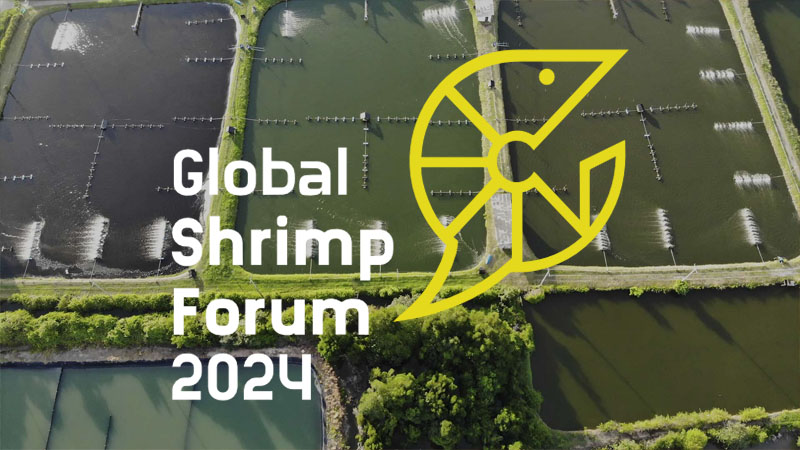Exclusive content

As the Global Shrimp Forum 2024 in Ecuador came to a close, a gathering of BioMar’s top executives offered fresh insights on the future of shrimp aquaculture. Spearheaded by BioMar CEO Carlos Diaz, the panel explored the opportunities and challenges facing this rapidly evolving sector. The discussions, featuring voices such as Henrik Aarestrup, Katherine Bryar, and Michael Gammelgaard, underscored the potential for shrimp to match the sustainability strides of the salmon industry.
Learning from Salmon
Carlos Diaz opened the discussions with a comparison between shrimp and salmon, two of the world’s most popular seafoods. While shrimp currently has a higher carbon footprint, Diaz remained optimistic about its future. He stressed that innovation in raw materials is essential to reducing the environmental impact of shrimp production, highlighting BioMar’s experience in salmon aquaculture.
Diaz noted that true innovation often starts small, which can increase initial costs. “They usually start on a small scale, so they are more expensive,” he remarked. However, he cautioned against focusing solely on cost-cutting measures, emphasizing that ongoing research and development are critical for long-term success. For the shrimp sector to follow salmon’s sustainability trajectory, it must prioritize best practices, advanced feeding technology, and certification standards.
Shrimp Feed and the Role of Responsible Sourcing
Henrik Aarestrup, VP for LATAM Shrimp & Hatchery at BioMar, contributed valuable insights into the economics of shrimp feed. Speaking during sessions on shrimp nutrition and responsible feeding, Aarestrup pointed to an expected decline in feed prices driven by falling raw material costs for commodities like soybean bran, wheat, and fishmeal.
“We are seeing a decline in some of the raw material prices,” Aarestrup explained, though he cautioned that the timing and extent of cost reductions would vary by region. Differences in supply chains could delay price relief for shrimp farmers, highlighting the complexity of managing input costs in the global shrimp market.
Understanding the Shrimp Consumer
In her session on boosting shrimp consumption, Global Marketing Director Katherine Bryar addressed the importance of challenging assumptions about consumer behavior. Drawing on her experience with the Egg Council of Australia, Bryar underscored that overcoming simple consumer barriers can lead to significant growth in demand.
“Don’t assume you know the barriers to shrimp consumption,” she advised, suggesting that understanding consumer concerns can unlock new opportunities for growth. Bryar pointed to the success of the Australian egg industry, where consumer trust was built through targeted education campaigns. “Today, 88% of the Australian public trusts Australian eggs,” she noted, advocating for similar strategies to be applied to shrimp.
A Collaborative Future for Shrimp Feed Companies
BioMar’s Business Development Director, Michael Gammelgaard, closed the forum with a focus on the future role of feed companies in the shrimp industry. Speaking at the Finance and Investment Summit, Gammelgaard emphasized the need for “innovative collaborative partnerships” in mature markets, where growth is driven not by cost per kilo of feed but by sustainability and total production cost.
“In mature markets, you have to be a partner with the big farmers,” he explained, highlighting the importance of transparency, data integration, and traceability in building trust. Gammelgaard pointed to Ecuador, a key shrimp market, where farmers are increasingly seeking partnerships with nutrition suppliers for co-branding and certifications.
By fostering collaboration across the supply chain, from feed suppliers to farmers to retailers, shrimp producers can create a unified value proposition that resonates with consumers. “Retail chains would like to see nutrition come in, be present, and tell the same story as the farmers,” Gammelgaard said, emphasizing that trust and cooperation are key to driving growth in the shrimp market.